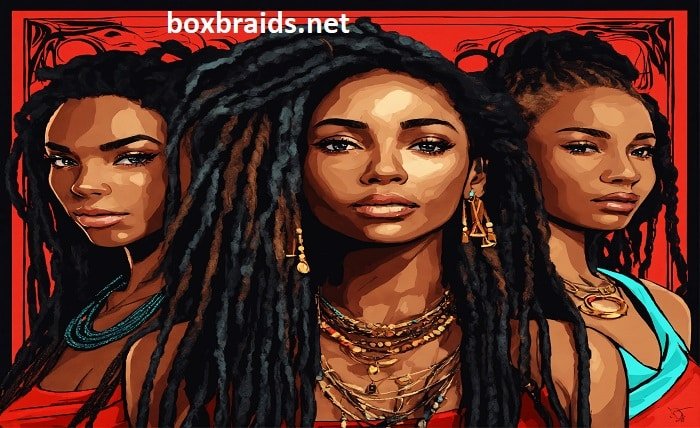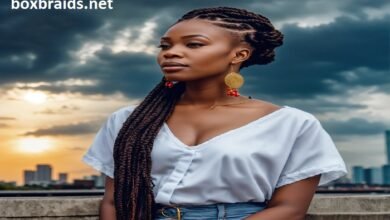Dreads Styles: The Ultimate Guide to Popular Dreadlock Hairstyles

Dreads styles have long been a symbol of cultural expression, individuality, and artistic flair. This unique hairstyle has been worn by people across the world for centuries and continues to evolve into new trends and designs. Whether you prefer a more traditional look or a modern twist, dread styles offer versatility and can be adapted to suit various tastes. In this blog post, we’ll explore some of the most popular dread styles, the maintenance required to keep them looking fresh, and how you can personalize your locs for a one-of-a-kind appearance.
The History and Cultural Significance of Dread Styles
Before we dive into the different dread styles, it’s essential to understand the cultural significance behind dreadlocks. This hairstyle has historical roots in various cultures, including African, Hindu, and Rastafarian traditions. Dreadlocks were often a symbol of spiritual and cultural identity, and in modern times, they have also become a representation of rebellion, individuality, and freedom. Knowing the history of dread styles adds depth to the choice of wearing them today, making it not just a fashion statement but also a reflection of personal or cultural identity.
Classic Dreads Styles: Traditional and Timeless
For those who prefer a more classic look, some dread styles have stood the test of time. One of the most well-known is the freeform dreadlocks, where the hair naturally knots and twists without much manipulation. Another traditional style is manicured locs, which are sectioned and twisted neatly for a cleaner appearance. These dread styles are perfect for individuals who appreciate simplicity and want a low-maintenance yet stylish look. Classic dread styles often require fewer products and manipulation, making them an ideal choice for those seeking a natural aesthetic.
Dreads Styles for Short Hair
You don’t need long hair to enjoy the beauty of dread styles. There are many options for those with shorter hair, allowing you to experiment with locs while your hair grows. Mini twists and starter locs are two popular dread styles for short hair, providing a foundation for future growth. As your hair grows, these small locs will develop into fuller dreadlocks. For a more defined look, some people opt for crochet locs, which help maintain the shape and structure of shorter locs. These dread styles are perfect for beginners or anyone looking for a fresh start.
Dreads Styles for Long Hair
If you’re blessed with long hair, the possibilities for dread styles are endless. Long locs allow for intricate styles such as braided dreads, updos, and bun styles that showcase the length and volume of your hair. One of the most popular dread styles for long hair is the half-up, half-down look, where part of the locs are tied up while the rest flow freely. For special occasions, dread styles like loc buns or loc braids add elegance and sophistication. Long hair offers flexibility and creativity when it comes to styling dreadlocks, making it a perfect canvas for experimenting with different looks.
Unique and Trendy Dreads Styles
If you’re looking for something bold and unique, there are plenty of trendy dread styles that push the boundaries of traditional locs. Colored dreads have become a popular trend, with individuals dyeing their locs in vibrant shades like blue, purple, or even neon hues. Faux locs are another trend, allowing individuals to achieve the look of dreadlocks without committing to the permanent style. For those who enjoy accessorizing, adding loc jewelry or beads can give your locs a unique flair. These modern dread styles allow for endless creativity and self-expression.
Dreads Styles for Men
Dreadlocks have become increasingly popular among men, with a variety of dread styles specifically suited to male grooming preferences. From undercut locs to high-top dreads, there are many options for men looking to rock dreadlocks. One of the most common dread styles for men is the fade with dreads, where the sides of the head are shaved, and the top section features locs. Another stylish option is the twist-out dreads, which give a more relaxed, textured look. For men, dread styles offer a rugged yet refined aesthetic, perfect for showcasing personality and confidence.
Dreads Styles for Women
Women have long embraced dreadlocks as a way to showcase their creativity and style. From intricate dreadlock updos to loc braids, the options for dread styles for women are vast. One popular style is the goddess locs, which give a soft and feminine appearance while maintaining the structure of dreadlocks. For a more casual look, many women opt for half-up ponytails or space buns, which are playful and stylish. Whether you’re looking for a casual everyday look or something more elegant for a special occasion, dread styles for women offer a wide range of versatility.
Maintaining and Caring for Dread Styles
While dread styles are incredibly versatile, maintaining them requires regular care and attention to keep them looking their best. Proper maintenance involves washing, conditioning, and regularly retwisting or palm-rolling your locs to prevent them from becoming frizzy or unruly. It’s also important to avoid using heavy products that can build up and weigh down your locs. Keeping your scalp clean and moisturized is essential to promoting healthy hair growth and preventing itching or irritation. Whether you choose freeform locs or more structured dreads styles, consistent care will ensure your locs remain healthy and strong.
Personalizing Your Dreads Styles
One of the best aspects of having dreadlocks is the ability to personalize your look. Dreads styles can be tailored to fit your personality, whether through color, accessories, or styling techniques. Many people choose to accessorize their locs with beads, wraps, and even shells to add a touch of individuality. Others opt for partial dread styles, where only sections of the hair are locked, while the rest remains loose. By experimenting with different dread styles, you can create a look that’s unique to you and reflects your style.
Conclusion
In conclusion, dread styles offer endless possibilities for self-expression, individuality, and creativity. Whether you prefer traditional locs, trendy modern designs, or something unique, there’s a dreadlock style that’s perfect for everyone. From short hair to long hair, men to women, the versatility of dread styles allows you to create a look that reflects your personality. With proper care and maintenance, your locs will continue to look fresh and vibrant. Embrace the beauty and versatility of dread styles, and enjoy the journey of personalizing this iconic hairstyle.
FAQ
1. How long does it take to grow long dreadlocks?
The time it takes to grow long dreadlocks depends on your hair type and how well you maintain your locs. Generally, it can take anywhere from six months to two years for dread styles to mature fully.
2. Can I wash my hair with dreads?
Yes, it’s essential to wash your hair regularly when wearing treadles to keep your scalp clean and prevent buildup. Use a residue-free shampoo to avoid leaving behind products that can weigh down your locs.
3. What’s the difference between freeform locs and manicured locs?
Freeform locs allow the hair to naturally form into dreadlocks with minimal manipulation, while manicured locs are sectioned and twisted for a more controlled and defined appearance. Both dread styles offer distinct looks and require different maintenance routines.
4. Can I color my dreadlocks?
Yes, coloring your dreadlocks is a popular way to personalize your look. However, it’s important to use hair-safe dyes and ensure that your locs are in good health before applying any color to avoid damage.
5. What’s the best way to maintain dread styles?
To maintain dread styles, regularly wash and condition your locs, avoid heavy products that can cause buildup, and retwist or palm-roll them as needed to keep them neat. Keeping your scalp moisturized is also crucial for healthy locs.




